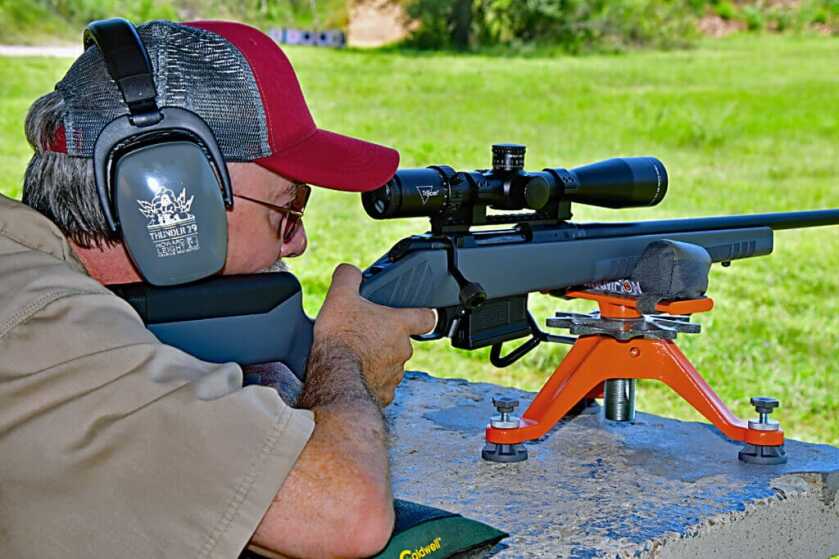
Estimated reading time: 10 minutes
Colt’s new CBX TAC Hunter is a hybrid design offering the ergonomics and accuracy of a competition rifle in a lighter, hunter-friendly package.
Table of contents
When you hear the name “Colt,” firearms that immediately spring to mind include AR-15s, 1911 pistols, and revolvers like the Python, Anaconda and Cobra. Colt has also made some bolt-action rifles throughout its long and storied history. Still, the brand never became synonymous with bolt-action rifles like Winchester, Remington and Ruger did.
Colt set out to change that after CZ acquired the company three years ago by leveraging CZ’s bolt-gun expertise. Colt’s initial offering came last year in the form of the CBX Precision rifle, a chassis gun optimized for PRS competition and long-range shooting. Now Colt has added a hunter-friendly model to the CBX TAC Hunter lineup. While it still has somewhat tactical lines, it’s a lighter, handier hybrid rifle combining the ergonomics and accuracy of a competition gun with features today’s hunters want. The TAC Hunter is initially chambered in 308 Win. and 6.5 Creedmoor.
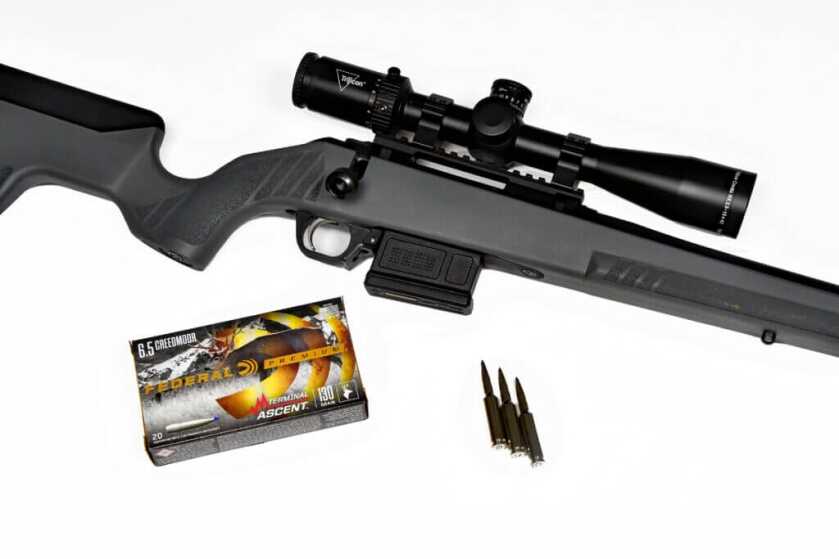
Made in America
Colt’s reentry into the bolt-action market is noteworthy for another reason. CBX rifles are not made by external partner firms, like many Colt firearms of relatively recent history. Colt manufactures the rifles at Colt’s historic facility in Hartford, Conn.
Available on GunsAmerica Now
The heart of the CBX TAC Hunter is an action that borrows heavily from the CZ 600 rifle, with the TAC Hunter using the same full-diameter bolt. It departs from traditional bolt designs by using three dual locking lugs (for a total of six lugs) that provide a solid lockup. They also allow the bolt to function with a short, 60-degree lift for ample scope clearance. The bolt face is also a bit different. One of the lugs is essentially cut in half, resulting in an open bottom portion of the bolt face. An extractor, situated in one of the bolt lugs, glides over the rim of a cartridge before it is fully pushed into the chamber, making the action sort of semi-controlled-round feed.
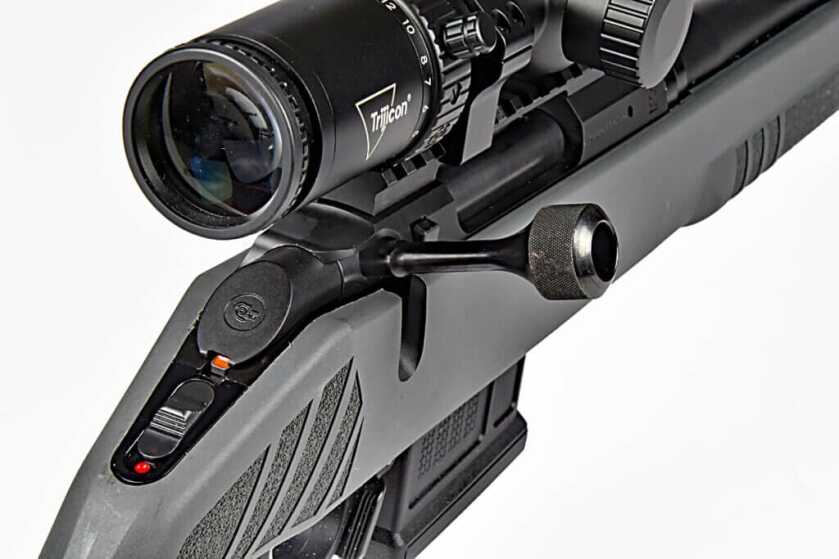
Stainless, Flat-Bottomed Receiver
The action employs a two-position, tang-mounted safety that locks the bolt down when engaged. This doesn’t matter to some, but it’s a good idea for rifles that may be toted through thick brush, where branches can snag on the bolt and inadvertently open the action. Just forward of the bolt handle, you will find a bolt-unlock button that allows you to safely cycle rounds through the action with the safety engaged. That button also functions as a bolt-release that enables you to remove the bolt from the action. A red cocking indicator shows at a glance if the action is cocked.
The somewhat beefy, stainless-steel receiver is flat-bottomed to reduce flex and, theoretically, improve accuracy. Both the receiver and the barrel have a black nitride finish to protect against the elements.
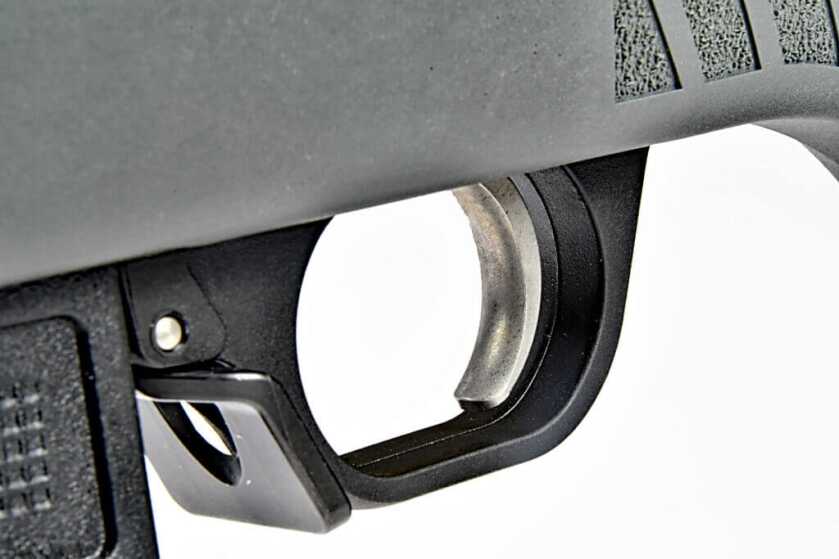
CBX TAC Smooth Cycling
I was impressed with the CBX TAC Hunter’s trigger. It broke crisply and cleanly, with no take-up and no hint of creep. The trigger break is user-adjustable, within a range of 2.5-5 lbs., but you’ll have to remove the barreled action from the stock to make any adjustment. As my test rifle arrived from the factory, the trigger broke consistently at a pull weight of 4 lbs., 7 oz. That is considerably heavier than I prefer, but I left the trigger at that setting to duplicate a buyer’s out-of-the-box shooting experience.
The CBX TAC Hunter feeds from a single-stack Magpul AICS five-round magazine. Feeding was flawless during testing, and the bolt cycled so smoothly I wasn’t sure, at times, if I had actually chambered a round. Partially withdrawing the bolt revealed that a round was chambered every time. The magazine was easy to insert into the stock and withdraw using a paddle-style magazine release located at the forward end of the trigger guard.
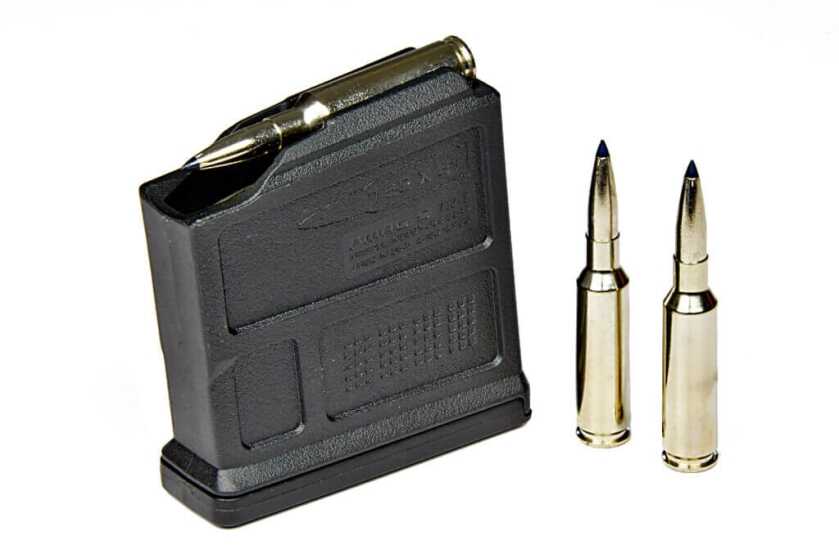
Threaded Sporter Barrel
My 6.5 Creedmoor-chambered test rifle was equipped with a 22-inch, button-rifled, carbon steel barrel, attached via a barrel nut. The muzzle is threaded (9/16-24) for attaching brakes or suppressors and comes with a knurled thread protector in place. The barrel profile is, to my eye, more of a medium-weight sporter than a traditional sporter profile. This somewhat heavier barrel, combined with the square-bottom receiver, brings the empty rifle weight to 7.2 pounds. Adding a rail, rings, and scope boosted weight to a bit more than 9 pounds. You can shave some of that weight by using traditional rings, without a rail, and by using a lighter scope. The CBX Precision rifle, in contrast, weighs more than 10 pounds before you add anything to it.
Adjustable Stock for Custom Fit
The stock of the CBX TAC Hunter left me with mixed emotions. On the plus side of the ledger, the gray polymer stock comes with three spacers and two risers that let you adjust it for a custom length of pull (12.75-14.25 inches) and comb height. The wide, flat bottom works well with a variety of rests. I found that the somewhat vertical grip helped me achieve a more consistent trigger squeeze. The stock doesn’t come with an ARCA rail (the CBX Precision rifle does), but it does have three sling swivel studs (two forward) that allow you to use both a bipod and sling. The stock comes with a generously sized recoil pad. Stippling in the right places provides a sure grip in any weather.
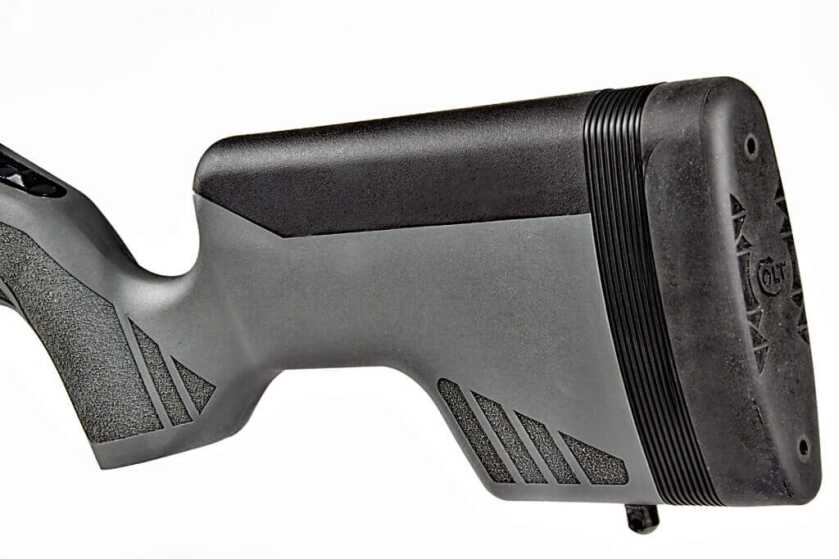
On the negative side of the ledger, the stock forend has slightly more flex than I would like. Bottom metal is plastic. The buttstock had a thin plastic feel to it and a shape that would serve, in a pinch, as a boat paddle. It worked fine in field shooting positions, but at the end of the day, I found myself wishing the rifle had a more traditionally styled stock. If you prefer a stock with a more tactical appearance, you may be perfectly happy with it.
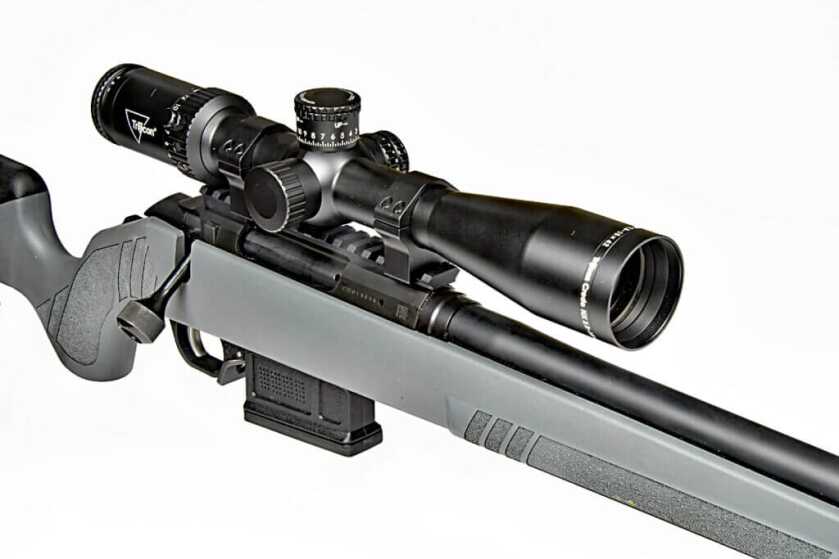
CBX TAC Provides Affordable Accuracy
For many, beauty is found in functionality, and that’s where the CBX TAC Hunter shines — especially for a rifle with a $999.00 MSRP. The short bolt throw allowed me to run the gun fast. Throughout testing, it never failed to feed, fire, extract or eject. It also shot quite accurately even though I did not adjust the trigger pull weight.
For accuracy testing, I mounted a Trijicon Credo HX 2.5-15×42 scope on the rifle, which has no iron sights. The top of the action is drilled and tapped for Remington 700-pattern scope mounts and bases with #8-40 screws. The gun does not come with a Picatinny rail. Colt was kind enough to send one with the rifle, and I attached the scope to the rail with Talley scope rings. The scope, with its large magnification range, parallax adjustment, variable illuminated reticle and precise adjustments, proved to be a great choice for just about any job you would employ this rifle for.
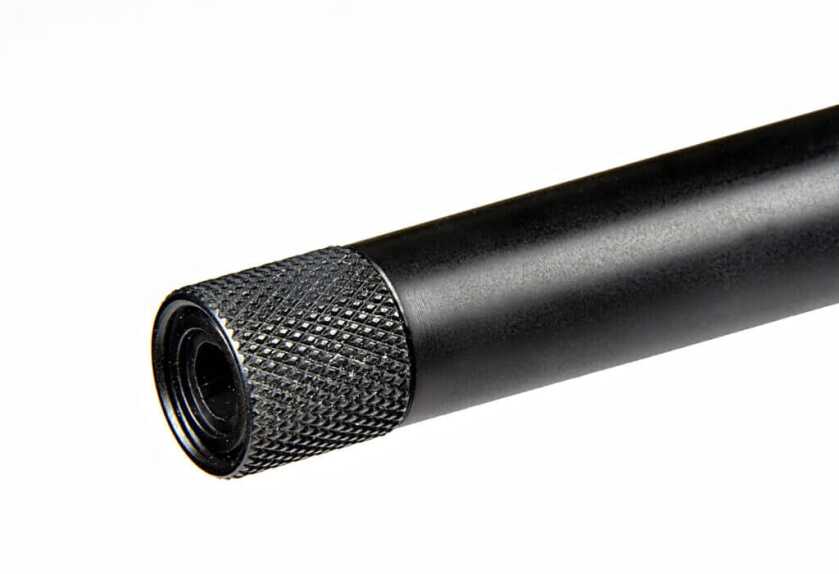
Range Results
Muzzle velocities for five tested factory 6.5 Creedmoor loads, measured with a Garmin Xero C1 Pro chrono, were close to factory-stated numbers. Variations from factory-claimed velocities ranged from minus 18 fps to plus 38 fps. That’s not enough to cause any significant difference in actual trajectory versus factory-calculated trajectory at any common hunting distance.
Four of the five 6.5 Creedmoor loads I chose for testing were hunting loads. Their bullet weights ranged from 127 grains to 143 grains. I added an additional load to the mix to see how the rifle would perform with a premium match load. My curiosity was quickly satisfied. A Federal Premium Gold Medal Center Strike 140-grain open tip match load turned in a stellar performance. That load printed average groups measuring 0.59 inch and a 0.42-inch best group. It showed great numbers for extreme spread and standard deviation, which were just 5.2 fps and 2.2 fps, respectively, for a three-shot group.
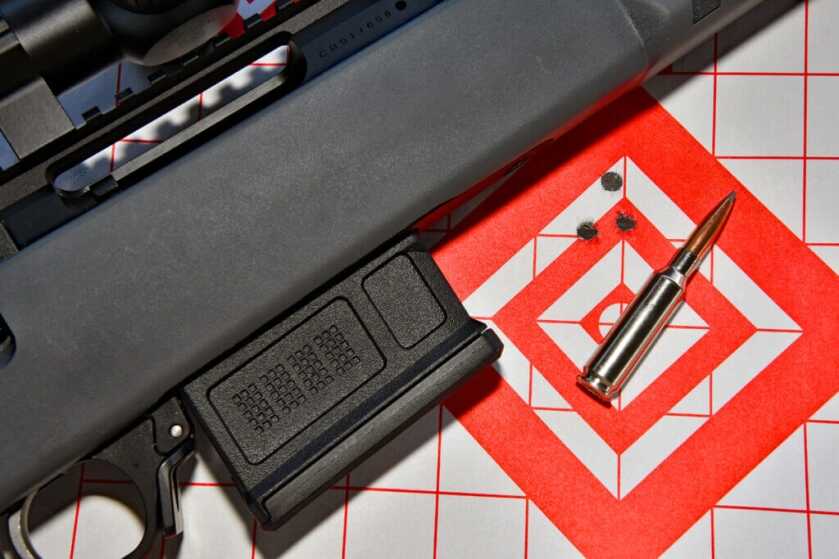
Sub-MOA Performance
With hunting ammo, the rifle showed a real preference for heavier loads over lighter loads. The leader of the hunting pack was Hornady’s Precision Hunter 143-grain ELD-X load. It shot a 0.45-inch best group and 0.67-inch average groups. Winchester’s 142-grain Expedition Big Game Accubond Long Range load also turned in sub-MOA performance. It printed 0.95-inch average groups and a 0.56-inch best group. Group size opened up a bit with lighter loads. Barnes’ Vor-Tx 127-grain LRX BT load shot 1.02-inch average groups, and Federal’s 130-grain Terminal Ascent load produced 1.70-inch average groups.
READ MORE: FN 545 Duty Ready Warrior
With loads it likes, the CBX TAC Hunter is clearly a very accurate rifle. Any misses with this gun are more likely to be the fault of the shooter than the rifle. It’s light enough for most hunting purposes. It’s chambered for two of the most popular hunting cartridges. And it’s offered at a price well below that of many other “hybrid” rifle designs. That makes it a winner in my book.

Colt CBX TAC Hunter Rifle Specifications
Action Length: Short action
Chambering: 6.5 Creedmoor, as tested
Barrel: 22-inch, 1:8 twist
Threaded: 9/16-24
Barrel Finish: Black nitride
Receiver Finish: Black nitride
Magazine/Capacity: Detachable AICS-style, 5 rounds
Sights: None, drilled and tapped for scope
Trigger: Adjustable, 2.5-5 lbs.
Weight: 7 lbs., 2 oz.
Stock: Gray polymer
Overall Length: 41.75 inches, adjustable
Length of Pull: Adjustable, 12.75-14.25 inches
Comb Height: Adjustable
MSRP: $999.00
*** Buy and Sell on GunsAmerica! ***




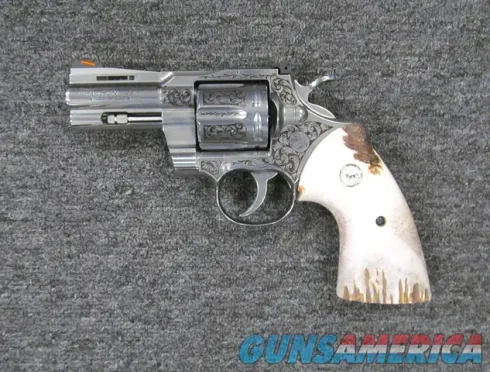





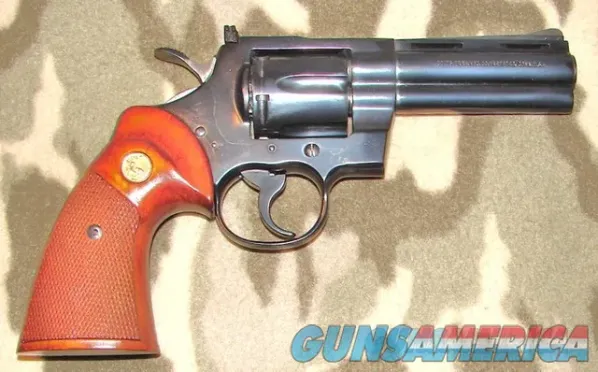

I have one in 308. I am impressed with the accuracy…3 rounds touching with Remington 150 gr ammo. There are a lot of things to like about this rifle. It is by far not the most expensive rifle that I own. I bought it for one reason…it’s a Colt. And I like the fact it is made here in America. What I don’t like is that CZ now owns Colt. And the stock is a little loud if you bump it against something. Value wise it’s a winner. It’s a lot of rifle for the money. And I would buy it again.